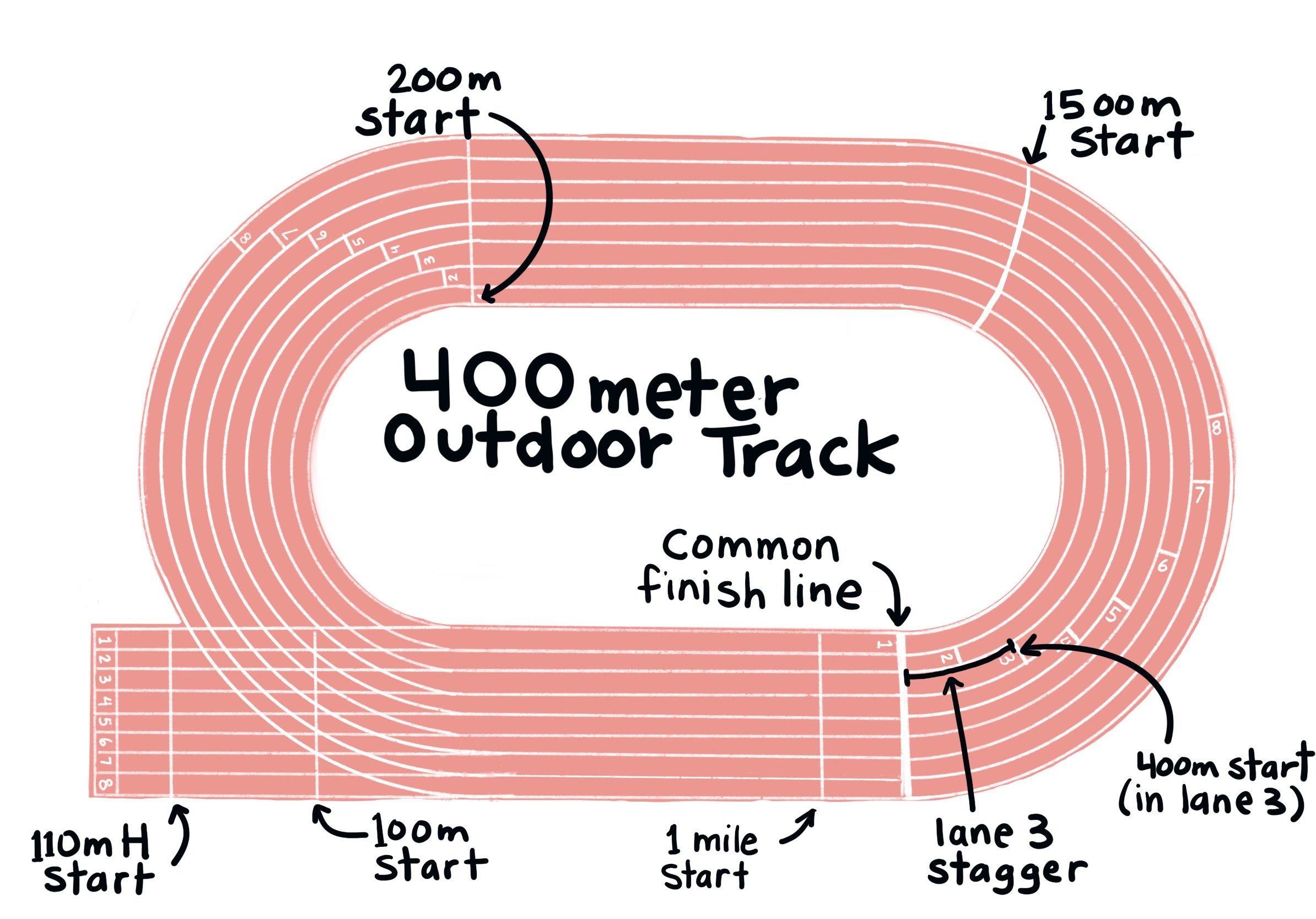A Runner’s Introduction to the Track
Want to take your training onto the oval? Many runners get their start in running on the roads. They were not on the high school track team, and have never even set foot on a track.
But lots of training plans for road races include workouts that are most easily run on a track. I think every runner should at least know the basics about track running so they can confidently use the oval if and when they want to.
Here are the BASICS!
Direction
On tracks we turn left. Running is done in a counter-clockwise direction.
Distance
A standard outdoor track oval is 400 meters in distance for a single lap in LANE 1.
One lap is approximately a quarter-mile, and often a the 400m distance is also called “a quarter.” However, 400m is slightly short of a full quarter mile. (A full mile is 1609 meters.)
An older outdoor track is sometimes slightly longer than 400 meters around. This is because older tracks were often designed to measure perfectly 4 laps to a mile. These tracks measure 440 yards to a lap which is equivalent to 402.3 meters. In general this won’t make a significant difference in training times and goal paces.
A standard indoor track is half the size of an outdoor track at 200 meters around in LANE 1. However, it is quite common to have custom sizes of indoor tracks anywhere between 200m - 400m per lap.
© copyright Sifuentes Coaching 2022
Lanes
A standard outdoor track has 8 lanes around, and the outer lanes are all longer than 400 meters to a lap. The lanes are each marked with their own start line which is 400 meters away from the common finish line.
The lanes are marked with additional start lines for 200m on the far side of the track.
The distance between the start line in lane 1 and start lines in each respective lane is referred to as the “stagger.”
The Oval
Although there is a standard track size of 400m, there is no standard shape to a track oval. Instead, the shape of the oval is often designed to accommodate a field on the infield (the grass or turf area inside the track).
This means that some tracks have tighter turns with longer straightaways, and others have large turns with shorter straights. The ovals will look different - the former being “pill shaped” and the latter being more circular, but they will both be a standard distance of 400 m in lane 1.
Overhead view of the common finish line
That’s the end of Lesson 1, but I have several more posts coming up about track running and will cover the jargon (backstretch, waterfall start, etc.), why turns deserve very special consideration, how to run interval workouts, when to use the track (and when I do not recommend it!) and suggested workouts. Stay Tuned!
Have specific questions about the track? Leave a comment below and I will answer it!
Make sure you don’t miss any of the articles! My monthly newsletter includes a roundup of all recent articles and it’s totally free! Sign up today!
Nicole Sifuentes is a full-time Running Coach for adults of all ages and abilities. She is a former professional runner and 2-time Olympian, and Certified Strength and Conditioning Specialist. Read more about her services, and schedule your free coaching consultation.


